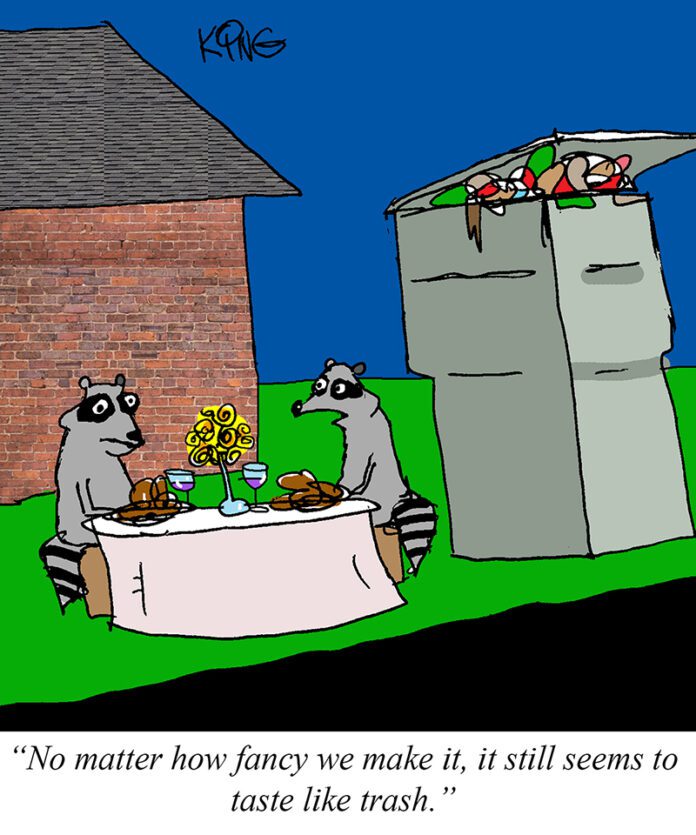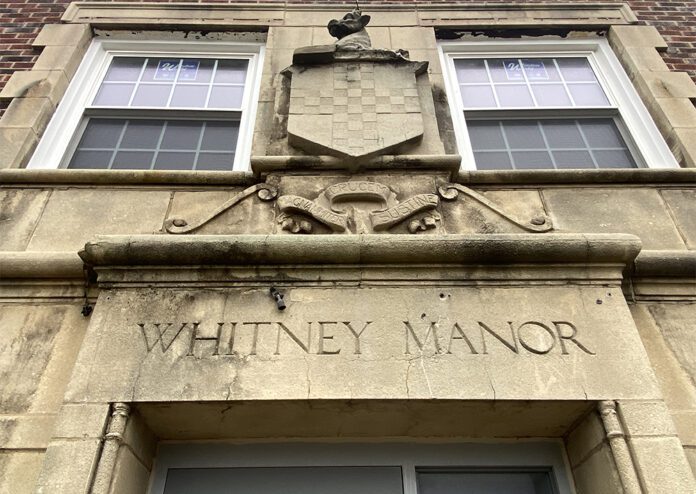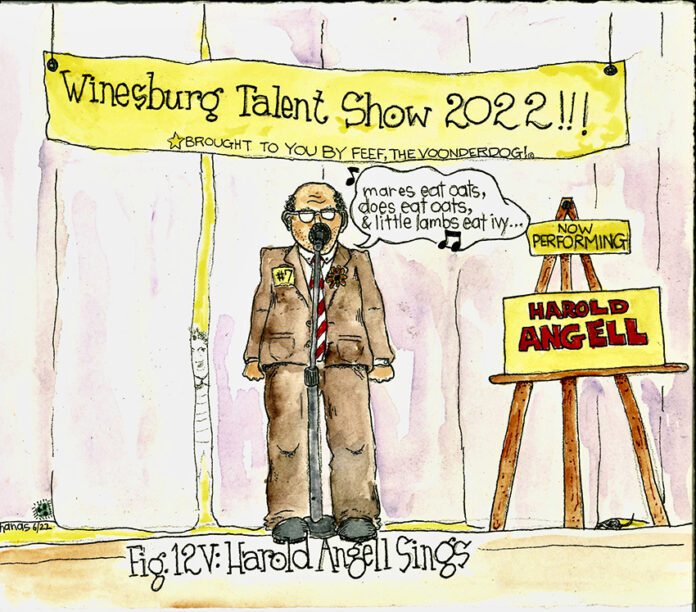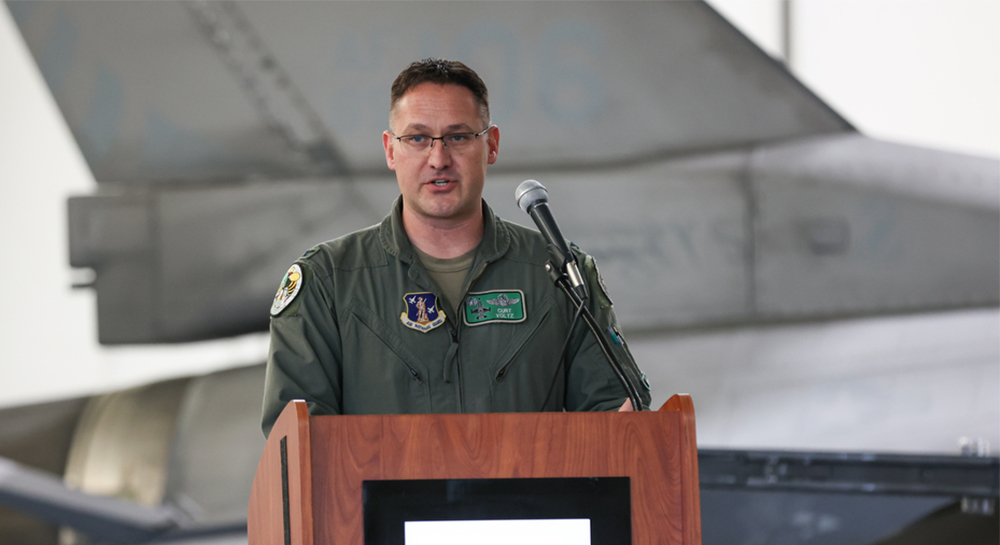Toledo moves forward with sustainability
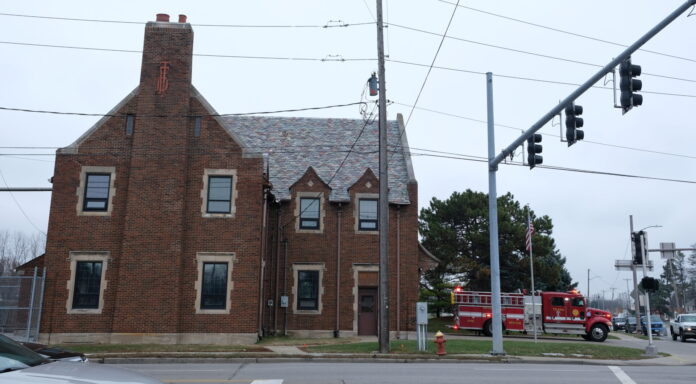

The sustainability manager for the City of Toledo, Dana Reising, recently discussed with the Toledo Free Press the various sustainability initiatives she’s currently leading.
FOOD COMPOSTING
Food composting is one of those initiatives. Launched a year ago, it has collaborative support with Metroparks Toledo, Keep Toledo/Lucas County Beautiful (KTLCB) and three Toledo city council members (Nick Komives, Theresa Gadus and Sam Melden).
The city has also partnered with GoZERO Services for a one-year trial program. GoZERO is a company that provides convenient food waste compost services and support.
“When we first started exploring GoZERO as a potential partner for our composting pilot program, they were an attractive option because they have worked with companies and organizations of all sizes,” Meldon said.

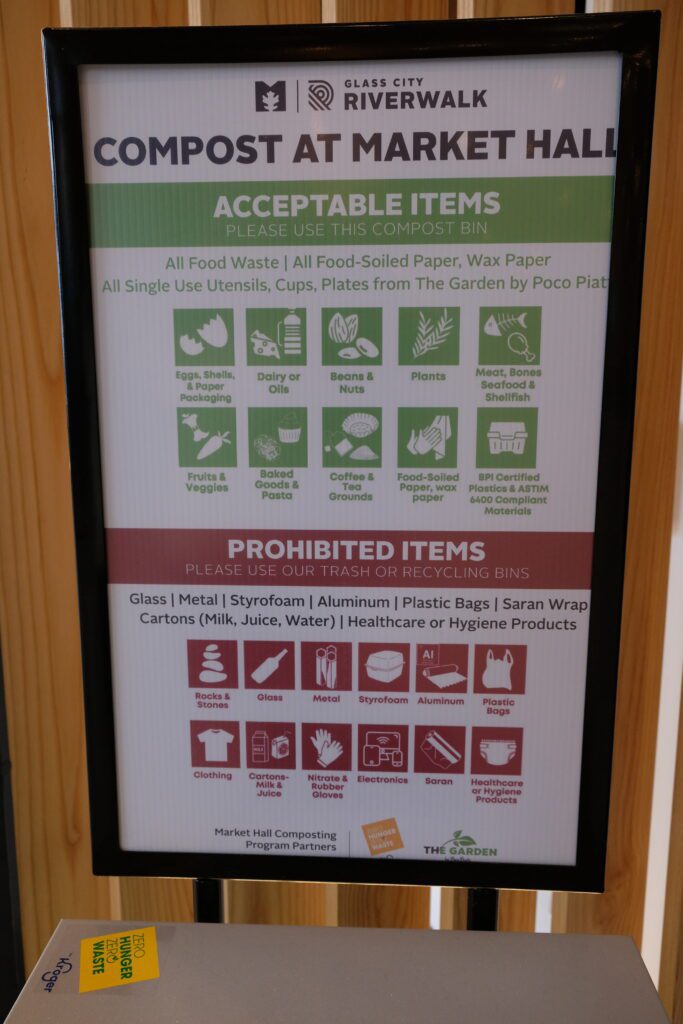

“The key to this pilot program is taking this in phases, and making sure we walk before we run. I hope this turns into a city-wide operation where everyone has easy access, but we have to prove the case first,” he noted.
Reising explained that composting is important because, “First of all, it makes you a lot more aware of how much food you are wasting. When I personally started composting this past year, I felt I have so much compost now; I need to garden more.
“And it made me think that I really need to be a lot more conscientious when I purchase food. Is this something that I will use in time, or will it go to waste?,” she said.
A massive amount of food is thrown away in the U.S. every year. In 2022, around 88.7 million tons of food were wasted, making up about 38 percent of the nation’s food supply. Individuals added to this waste primarily in restaurants, grocery stores and households. On average, each person threw out 349 pounds of food in 2022.
Reisling then mentioned that food waste that gets landfilled produces methane, and methane emissions from human actions cause 30 percent of global warming. Methane is a greenhouse gas with 80 times the ability to trap heat as compared to carbon dioxide during its first two decades in the atmosphere. According to the EPA, nearly 60 percent of landfill methane emissions are from food.
She added that you can also use the compost for plants that sequester carbon, so it helps with the whole carbon cycle.
The three sites for the composting drop off program are located at:
- Swan Creek Preserve Metropark
- Glass City Metropark
- Toledo Botanical Garden Metropark
Keep Toledo Lucas County Beautiful has instructions about how to participate in this program at Composting.
Reisling said she is very enthusiastic about this program and that’s it’s been going great. During its first year, the program diverted more than 60,000 pounds of food waste.
“2025 will be the second year of the pilot program. We are looking at options for making it permanent,” she noted.
CLIMATE ACTION PLAN
Another topic we covered was the Climate Action Plan. This plan outlines clear steps and goals for Toledo to lower greenhouse gas emissions and prepare for climate change effects. Reisling is the project manager for this effort.
“We hired Nutter Consulting to help us with developing the plan. We did a comprehensive plan review, so we looked at all of the projects and plans that the city has already completed and projects that we’re already implementing. And then we worked on doing a greenhouse gas inventory – this is getting close to final draft stage,” she explained.
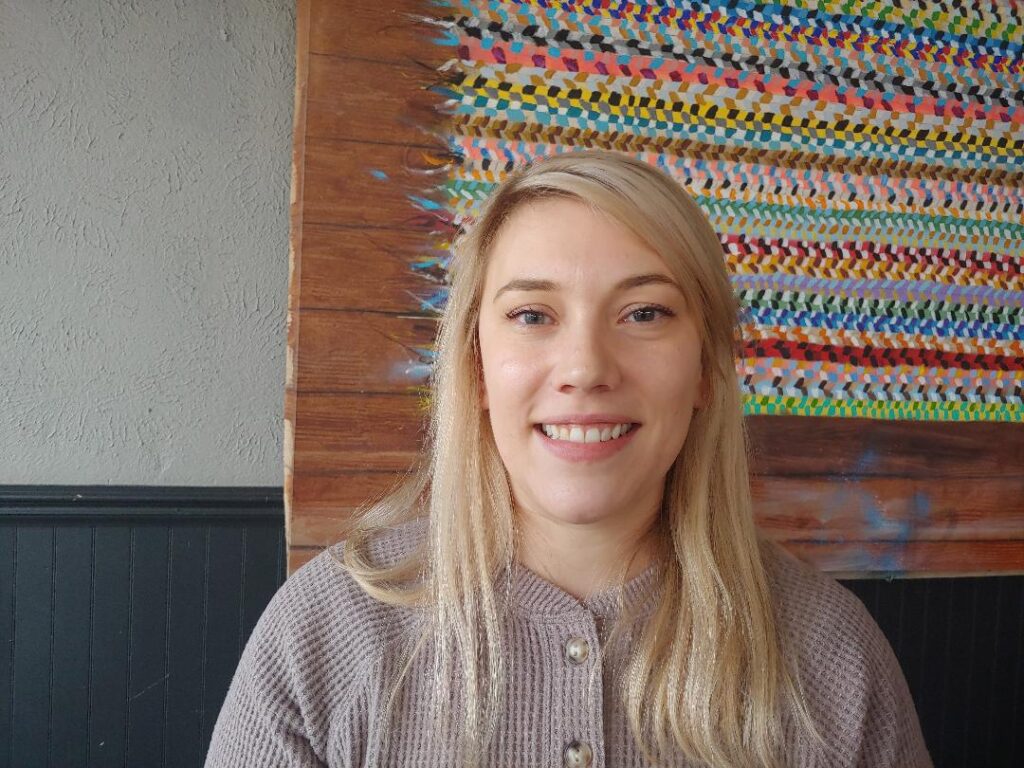

“We also had an internal visioning workshop, in which we brought city leaders and directors together and asked them initial questions about climate action and sustainability in their roles,” she continued. “They provided input on what they have already accomplished and what they wish to accomplish in the future.
“Now, we’re compiling that information and taking note of the ideas that received the most votes and the most consensus to begin outlining a plan,” which should be completed in 2025.
Other Ohio communities that have developed Climate Action Plans include: Cleveland, Columbus, Cincinnati, Akron, Dayton and Bowling Green.
PURCHASING EVs TO REPLACE THE CITY’S OLDEST VEHICLES
At a recent Toledo city council meeting, Komives, assisted by his legislative aide Evan Snapp and Reising, presented a resolution (R-583-24) to replace the city’s oldest vehicles with electric ones.
And on Wednesday, that resolution declaring the intent of the Toledo City Council to replace the City Fleet’s oldest, least efficient vehicles with efficient and cost-effective Electric Vehicles passed with unanimous city council support.
Research has shown that EVs are cheaper to run and cost less to maintain. “A 2023 Consumer Reports study concluded that owning an EV can save drivers between $6,000 and $12,000 over the vehicle’s lifespan, compared to a similar gas-powered model.”
Columbus, Cincinnati, Dayton and Dublin have electric vehicles in their fleets. The Bowling Green police division uses hybrids.
Not mentioned in the discussion of this resolution is the reality that the exhaust from gas powered vehicles is a health hazard. 17,000 – 20,000 people are killed annually in the U.S. by this toxin.
ENERGY EFFICIENCY
Reising discussed that a greenhouse gas inventory in 2023 showed that at lot of excess gas emissions were from the city’s facilities due to inefficient use of electricity and natural gas. She indicated that they were considering several projects to address a few of the community centers and fire stations in need of work.
“There are also some buildings that the city has that have original electrical and the roof has failed, so we’re trying to get these buildings back in healthy operating condition, and then maybe we will start looking at things like renewable energy heat pumps,” she said.
Reisling also indicated that one of the other issues they are working on right now is converting to LED lighting.
“That’s done a lot of good … so far. They are also making sure that our buildings are well insulated and considering other strategies, like perhaps when it’s time to replace the roof, we make sure it’s a white roof to save energy, or even looking to potentially doing green roofs,” she suggested.
Grant helps renovate Whitney Manor
TOLEDO – Unison Health has received a $300,000 grant to renovate Whitney Manor, not only saving a part of Toledo’s architectural history, but also – and more importantly – saving lives.
Unison will use the grant, received from Ohio’s One-Time Strategic Community Investment Fund, to provide permanent supportive housing for unhoused individuals with chronic mental illness.
“By addressing the root causes of homelessness, such as untreated mental illness and a lack of stable housing, we can make a real difference in the lives of those who are the most vulnerable,” explained Jeff DeLay, Unison’s president and CEO,
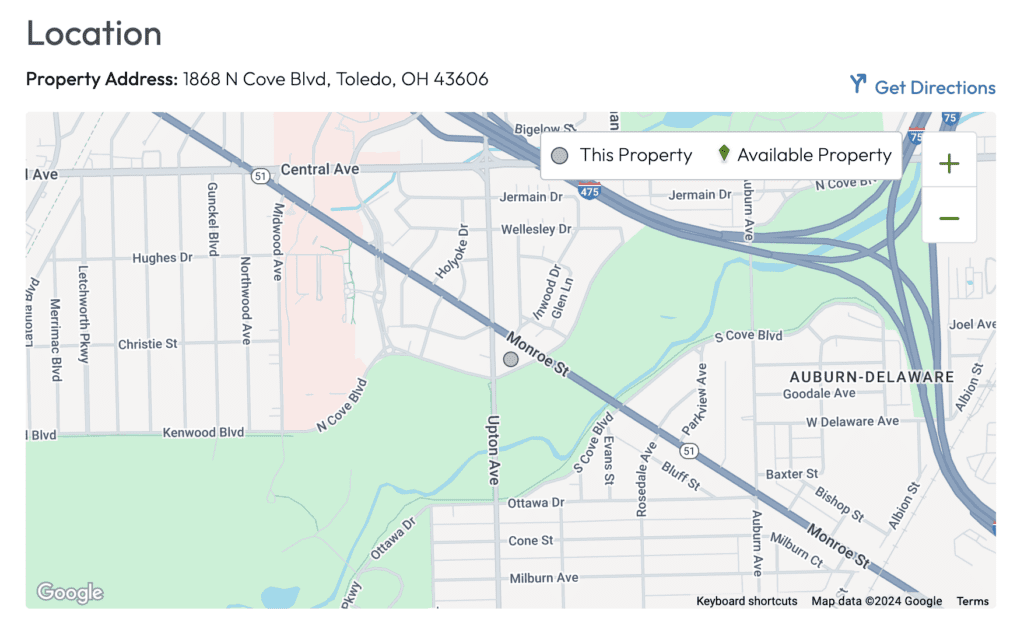

Unison acquired Whitney Manor, on North Cove Boulevard near the intersection of Monroe St. and Upton Ave., from the City of Toledo in 2023, and has been working with state and local officials to raise money for renovation and raise awareness of the need to provide supported housing.
At first, Unison lodged individuals in need there, but after a few months it became clear the roughly century-old building was unlivable. “We moved everybody into hotels for up to six months,” DeLay said. “We worked with every individual to get them into supported housing.”
In the meantime, other funds arrived, and Unison has put them to use. “We redid the roof, put in new windows and doors, updated the exterior lighting for safety,” DeLay said.
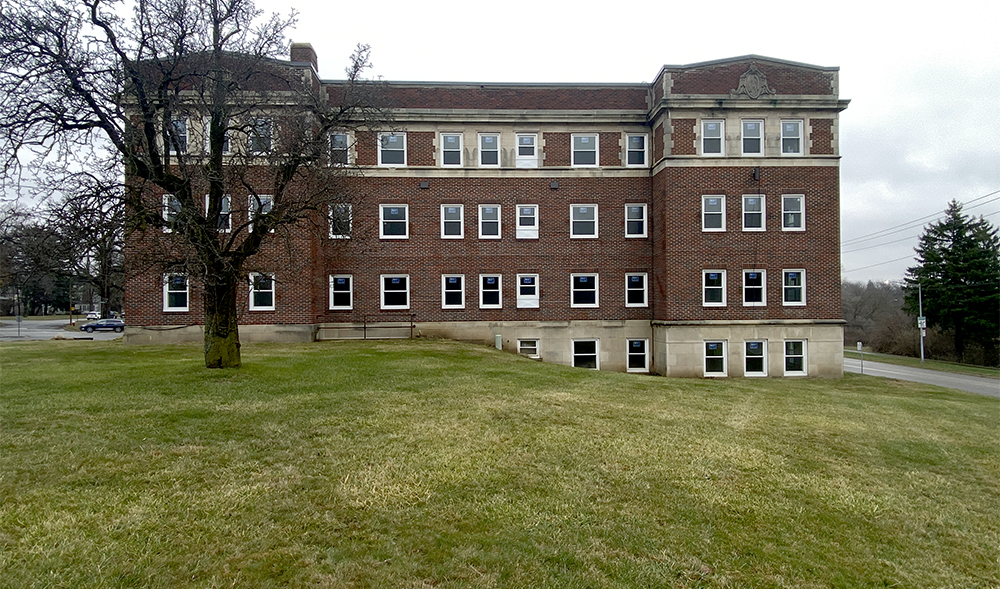

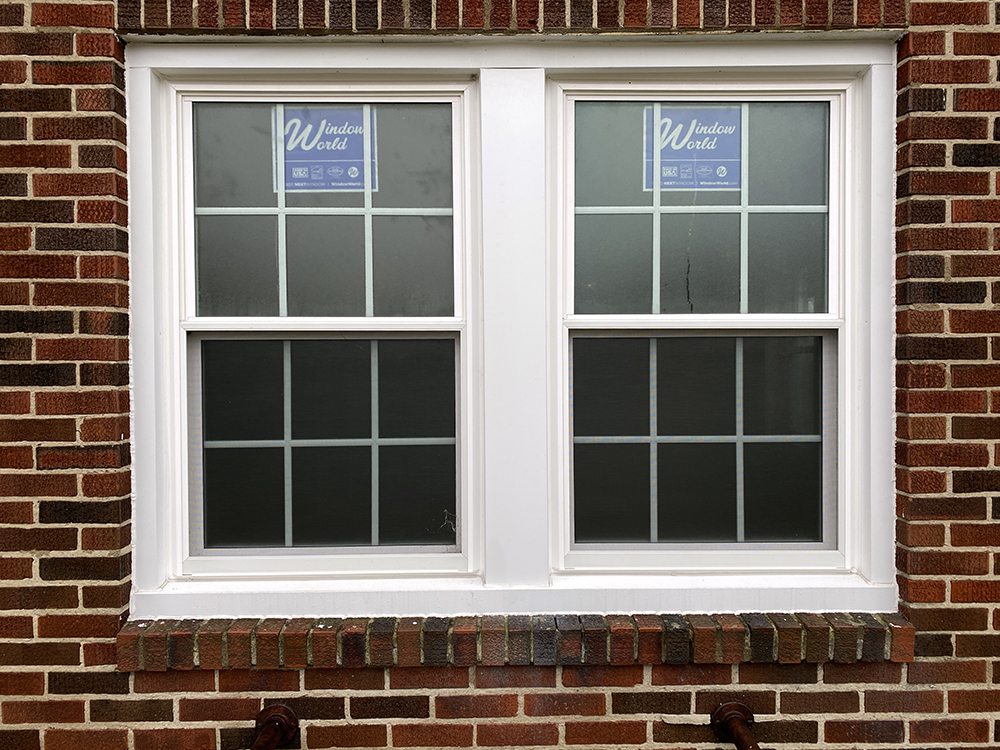

With the grant, he said there’ll be a full upgrade of all electrical components, plumbing, heating and cooling. The timeline is for work to begin in April and end in May of 2026.
“The bones are super strong,” DeLay said of the manor. “There’s a lot of character we want to preserve.” Yet, he said, “We made the decision to do a full interior renovation. It’s going to be a brand-new building on the inside.”
The plan is for the manor to house 20 individuals in 1,000-square-foot apartments, with Unison staff available “to help them take care of whatever needs they have – to support that individual to keep them living independently.”
Unison said Whitney Manor will provide a continuum of care that includes mental health services, substance use treatment and workforce skills training, all of which is an integrated approach to put individuals on a path toward recovery and stability.
The grant was awarded through bipartisan support from Northwest Ohio’s Senate and House lawmakers.
“I was proud to support Unison Health’s Whitney Manor project,” said State Sen. Theresa Gavarone (R-Bowling Green). “This project will be transformational and have a positive impact on the community for generations to come.”
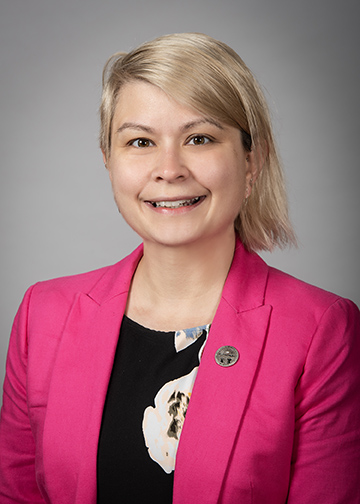

State Rep. Michele Grim (D-Toledo) said the project “is a welcome display of the state’s support for the continued preservation of historic communities and structures. It’s a fantastic opportunity that we can preserve this historic building while using it for the purpose of rehabilitation and housing. It is my hope that Whitney Manor will stand as an example for future opportunities.”
Grim added, “Many members of the General Assembly, regardless of party, understand the importance of supporting our most vulnerable Ohioans and how a lack of resources makes the road to recovery all the more difficult.”
More funds are needed, but DeLay said they are on the way. A $1.5 million grant is pending, and after the first of the year fundraising efforts will begin to secure $1 million to $1.5 million.
“Toledo has a lot of abandoned buildings,” he said. “We did not want this to be another.”
He added that Unison’s partnership with the city and other entities is significant. “This is an exciting project.”
DeLay said the project sends a message: “Let’s be creative and help some of the most vulnerable individuals in the community, but at the same time save the legacy of what made Toledo a beautiful city.
“It’s not just about renovating a hundred-year-old building, but raising the awareness of the homeless, especially during winter months.”
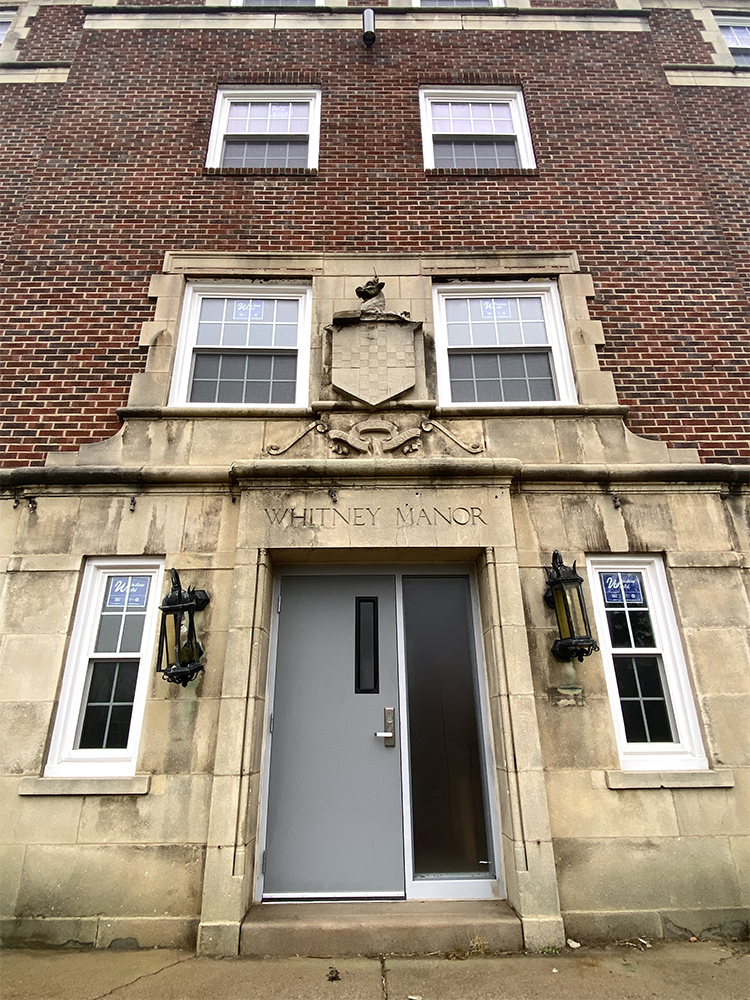

Iconic Owens CC silo demolished
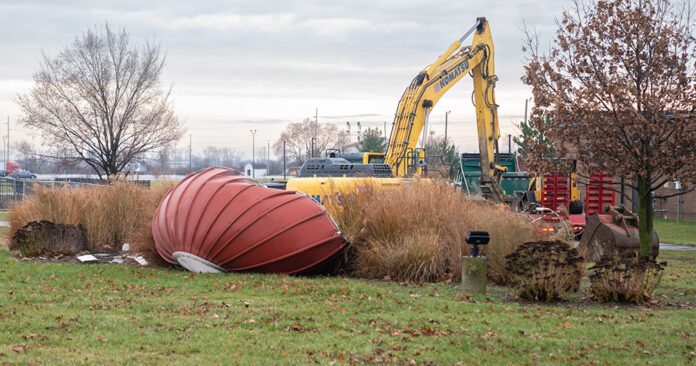

Age, decay reasons for downfall of landmark
By Jeremy Schneider (Press Release)
PERRYSBURG – It has stood at the intersection of Oregon Rd. and Biniker Dr. before there was an intersection; before there was even an Owens Community College. Now, the iconic silo that’s welcomed visitors to campus for nearly 60 years is gone.
Due to its age and resulting safety concerns, demolition of the silo began Monday morning, and it only took 15 minutes to wipe out that 40-foot landmark.
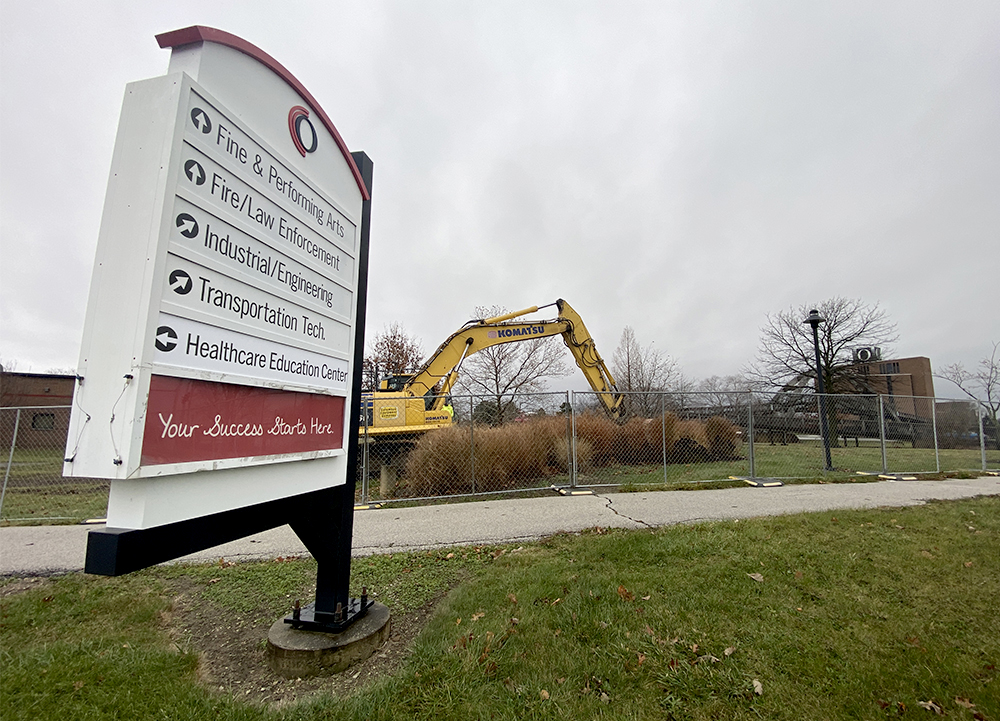

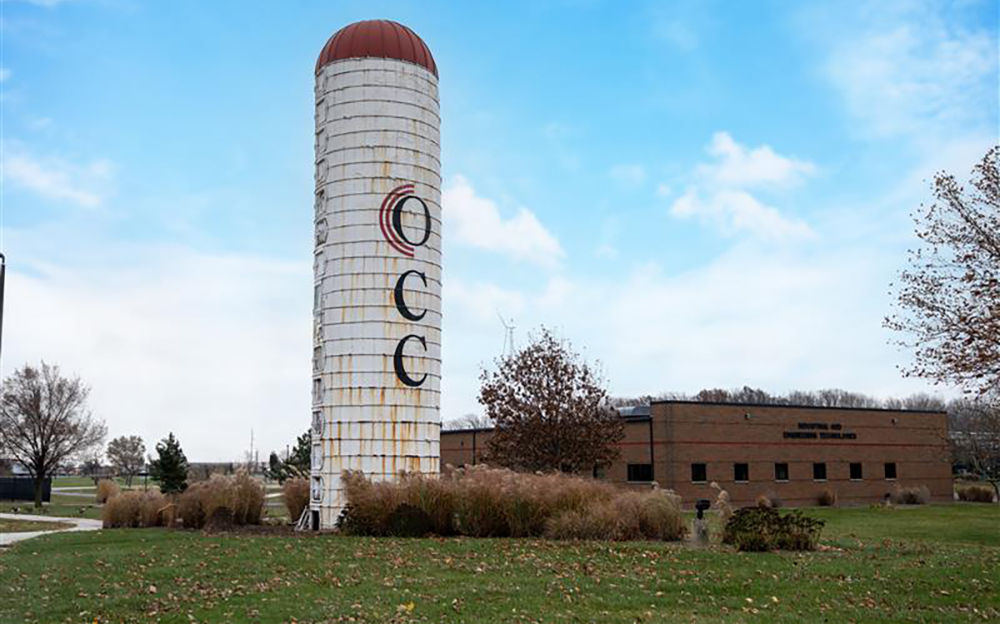

Noticeable leaning of the structure prompted Owens officials to evaluate the silo. Marietta Inspection Services recommended that the silo be demolished because of its age and condition and noted it could not be preserved.
The Klumm Bros., a demolition contractor out of Lucas County, dismantled the silo from the top down. The debris was hauled away and will be recycled.
A first inspection was completed on the silo in 2016 because of leaning, but it was determined to be structurally safe at that time.
There is no known documentation to specify exactly how old the silo is, but it was in place when Owens made its first land purchase from Clarence and Mary Biniker in 1971. Two more purchases, in 1986 and 1991, brought the total land purchased from the Biniker family farm to approximately 65 acres, leading to the completion of the east side of the Owens campus.
Nearly 20 percent of the Owens Toledo-area Campus’ 368 acres was formerly part of the Biniker family farm.
The silo, along with the Biniker farmhouse, was part of the 1991 purchase. That land is now the site of the Galleria Complex, which includes the new Healthcare Education Center, Center for Fine and Performing Arts and the Student Health and Activities Center, among other facilities.
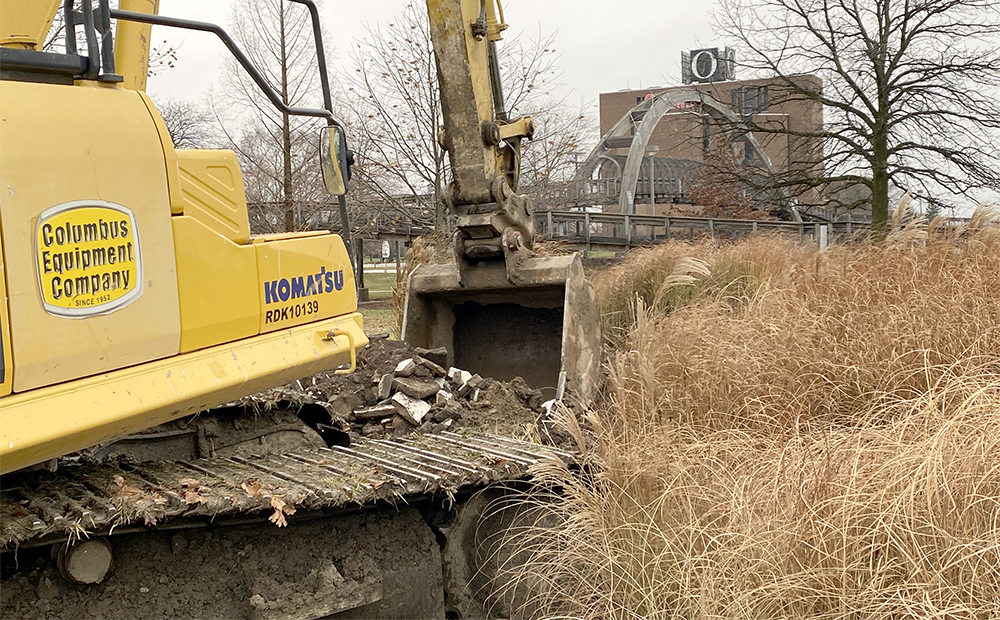

“What a story that silo could tell if it could talk. From the foundational practice of farming in Ohio to the development and growth of Owens Community College, the silo has stood guard over the Biniker farm and Owens,” Owens president Dr. Dione D. Somerville said. “As Owens approaches its 60th anniversary, we must consider the continued evolution of our physical structures and their safety and footprint on our campus.
“We are saddened by this development as the silo represents an important part of Owens’ history, but the safety of our college community is always our top priority,” she said.
The east-to-west roadway through the eastside of campus is named in honor of the family whose sale of the land led to the expansion of the Toledo-area Campus.
Ray Chapman’s tragic story
Cleveland author’s book profiles the Toledo Mud Hen
It was the top of the fifth inning when Ray Chapman settled his 5-foot-10 frame into the batter’s box at the Polo Grounds in New York City.
The Yankees’ pitcher that day was right-hander Carl Mays, an infamous “headhunter” who was known for intentionally throwing at opposing hitters. Chapman, nearing the end of his career as the shortstop for the Cleveland Indians, knew this.
Chapman was not wearing a batting helmet. None of the players wore helmets back then. The day was Aug. 16, 1920. Less than 12 hours later, the 29-year-old Chapman, known for his speed and rifle arm, would die from a depressed skull fracture.
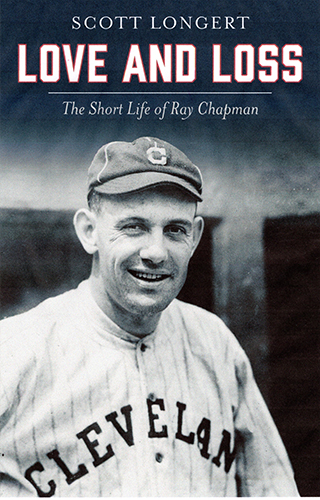

The fastball Mays threw hit Chapman in the temple with such force that Mays said later he thought the pitch hit the end of Chapman’s bat. Mays simply fielded the ball and threw to first base.
This tragedy has long been a part of baseball lore. To this day, Chapman, the son of a coal miner from Beaver Dam, Ky., is the only player to die in a major league baseball game.
Author Scott Longert, 70, a Cleveland native now living in Beachwood, knew parts of Chapman’s tragic story and chose the topic for his seventh book, Love and Loss: The Short Life of Ray Chapman. The book is 177 pages and was published by Ohio University Press in late August.
“I had this idea maybe three years ago,” Longert said. “I thought about Chapman for a while. Ohio University gave me a contract, and I did the research and we went from there. Chapman wasn’t born in Ohio, but he played in Toledo and played in Cleveland, so there was a good Ohio connection to it.
“Quite a bit about Chapman’s life was a rags to riches story. He played semi-pro ball and played for the Mud Hens for two years. He was considered the best shortstop in the American League.”
Chapman married Katie Daly, whose father, Martin, owned the Cleveland-based East Ohio Gas Company, the largest gas company in the country for many years.
“Katie was a very accomplished woman,” Longert said. “She went to school in Toledo, and her family had a house in the West End. They moved to Cleveland, and that’s where she met Ray. They had the perfect life.
“His father-in-law built them a home as a wedding present, and he was set at the height of his career. Life was great. He served with the Navy in World War I and probably would have gone on to great things. I just wanted to tell this story so people could learn about him and what he was about.”
One of Longert’s other books, Addie Joss: King of Pitchers (1998), profiles Hall of Fame pitcher Addie Joss, who pitched for the Mud Hens from 1900-01 and wrote sports for the old Toledo News-Bee. Joss also went on to play for the Indians.


Thom Ovacek, a commercial producer at WTOL in Toledo, met Longert a few years ago while making a video on Joss. The video includes interviews with Longert and Mud Hens historian and author John Husman.
“The strange similarities are Chapman and Joss both played for two years for the Mud Hens before moving to Cleveland,” Ovacek said. “I work at WTOL and we were looking for something to do for opening day (2021). I did a three-minute video for the news and a 10-minute version.
“It was the 110th anniversary of the passing of Addie Joss (tuberculous meningitis) and I wanted to put a Toledo spin on it. I grew up in Cleveland and loved Cleveland baseball, and Scott was a connection from Toledo and Cleveland. I read his book (on Joss) and decided we should tell this story on the news if possible.”
Longert said Love and Loss covers Chapman’s life from when he was a young boy through the aftermath of his death, and what became of his family, notably Katie and their daughter, Rae.
“People still go to his grave in Cleveland and leave baseballs and gloves,” Longert said.
Whatever happened to Mays, the pitcher who threw the fastball that ended Chapman’s life?
“This did not really affect his career at all,” Longert said. “He came back to pitch five days later and never showed any remorse. That just made his reputation worse and was probably what kept him out of the Hall of Fame.”
Love and Loss: The Short Life of Ray Chapman can be ordered online at ohioswallow.com.
DAILY DOSE | THE HUMORISTS
Editorial cartoon by Don Lee for the Toledo Free Press.
Felony flag on the play!




